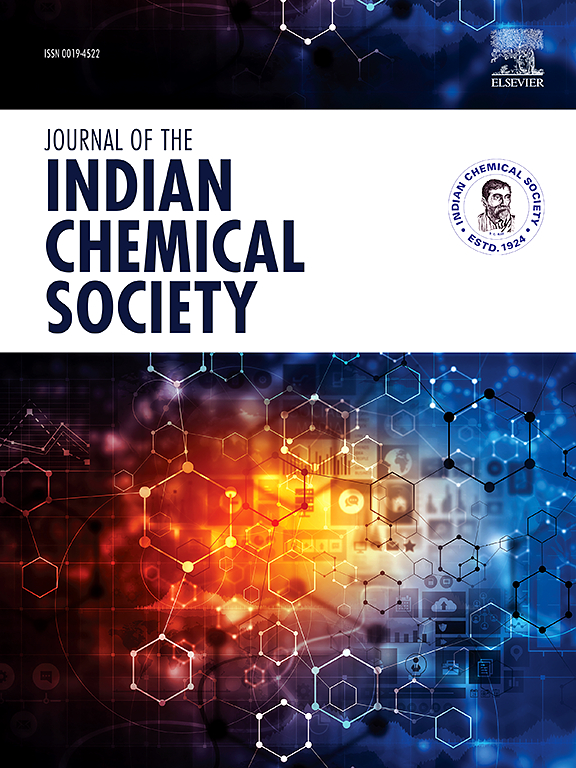Analysis and quantification of selected heavy metals and paraphenylenediamine in commercially available herbal black hair dyes in Sri Lanka
IF 3.2
4区 化学
Q2 CHEMISTRY, MULTIDISCIPLINARY
引用次数: 0
Abstract
Currently, the use of henna-based herbal black hair dyes is widespread in the community. However, it is important to note that these dyes cannot be classified as completely natural due to the addition of various ingredients to enhance their effectiveness. Most black hair dyes use paraphenylenediamine (PPD) to get a black hue, however, PPD is widely recognized as a contact sensitizer. The toxicity of heavy metals is also prevalent in the cosmetics sector. These metallic elements can permeate the skin and provide widespread exposure throughout the body. Hair dye requires an alkaline pH value because of reactions that occur during the dyeing process, which is incompatible with scalp pH. The varying concentrations of these chemicals and their frequency of usage can result in diverse health issues. The present research implemented High-Performance Liquid Chromatography and Atomic Absorption Spectrometry to quantify the concentrations of PPD and heavy metals (Pb, Cd, and Fe) in seven frequently used brands in Sri Lanka. The lead content in the examined samples exhibited variability, ranging from 0.04 ± 0.01 ppm to 0.28 ± 0.14 ppm. However, all the samples remained below the allowed level of 2 ppm according to the BVL standard. Regarding Cd, certain examined materials surpassed the acceptable thresholds, while others did not and varied between 0 ppm and 2.33 ± 1.92 ppm. Iron was found at a significantly higher concentration compared to the other two heavy metals. A significant quantity of PPD was detected, exceeding the allowable threshold of 6 % according to the European Union legislation. All the samples that were analyzed had a pH value within the alkaline range. The study indicates that herbal dyes generated from natural materials may contain harmful compounds, such as a high concentration of PPD in herbal black hair color potentially inducing sensitization.

斯里兰卡市售草本黑染发剂中特定重金属和对苯二胺的分析与定量
目前,以指甲花为基础的草本黑发染发剂在社会上广泛使用。但需要注意的是,这些染发剂由于添加了各种成分以提高效果,因此不能被归类为完全天然的染发剂。大多数黑发染发剂使用对苯二胺(PPD)来获得黑色色调,然而,PPD 被公认为是一种接触性致敏物质。重金属的毒性在化妆品领域也很普遍。这些金属元素会渗入皮肤,使人全身广泛接触。染发剂需要碱性 pH 值,因为在染色过程中会发生反应,这与头皮的 pH 值不相容。这些化学物质的不同浓度和使用频率会导致各种健康问题。本研究采用高效液相色谱法和原子吸收光谱法对斯里兰卡 7 个常用品牌中的 PPD 和重金属(铅、镉和铁)浓度进行了定量分析。受检样品中的铅含量存在差异,从 0.04 ± 0.01 ppm 到 0.28 ± 0.14 ppm 不等。不过,根据 BVL 标准,所有样品的铅含量都低于 2 ppm 的允许水平。至于镉,某些受检材料超过了可接受的阈值,而其他材料则没有,其含量介于 0 ppm 和 2.33 ± 1.92 ppm 之间。铁的含量明显高于其他两种重金属。检测到了大量的 PPD,超过了欧盟法律规定的 6% 的允许阈值。所有分析样本的 pH 值都在碱性范围内。这项研究表明,由天然材料制成的草本染料可能含有有害化合物,例如草本黑发色素中的高浓度 PPD 可能会导致过敏。
本文章由计算机程序翻译,如有差异,请以英文原文为准。
求助全文
约1分钟内获得全文
求助全文
来源期刊
CiteScore
3.50
自引率
7.70%
发文量
492
审稿时长
3-8 weeks
期刊介绍:
The Journal of the Indian Chemical Society publishes original, fundamental, theorical, experimental research work of highest quality in all areas of chemistry, biochemistry, medicinal chemistry, electrochemistry, agrochemistry, chemical engineering and technology, food chemistry, environmental chemistry, etc.

 求助内容:
求助内容: 应助结果提醒方式:
应助结果提醒方式:


